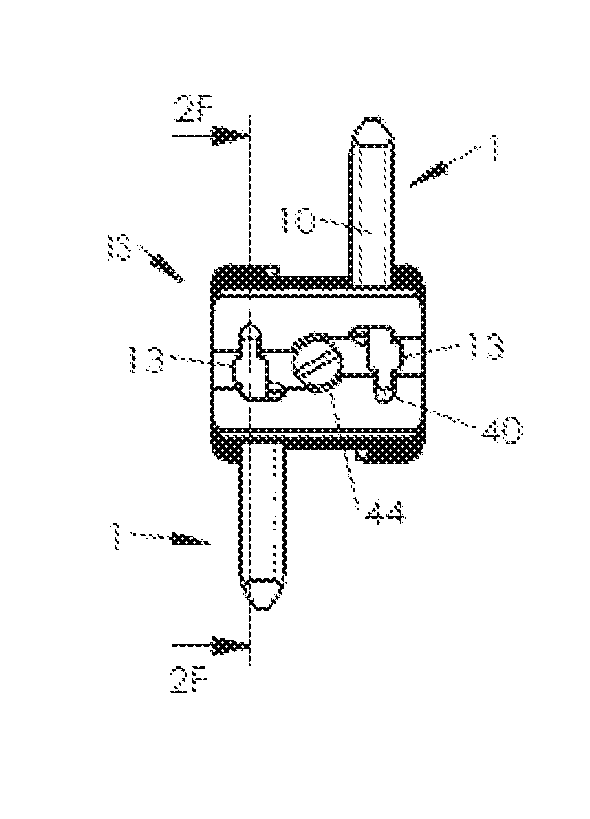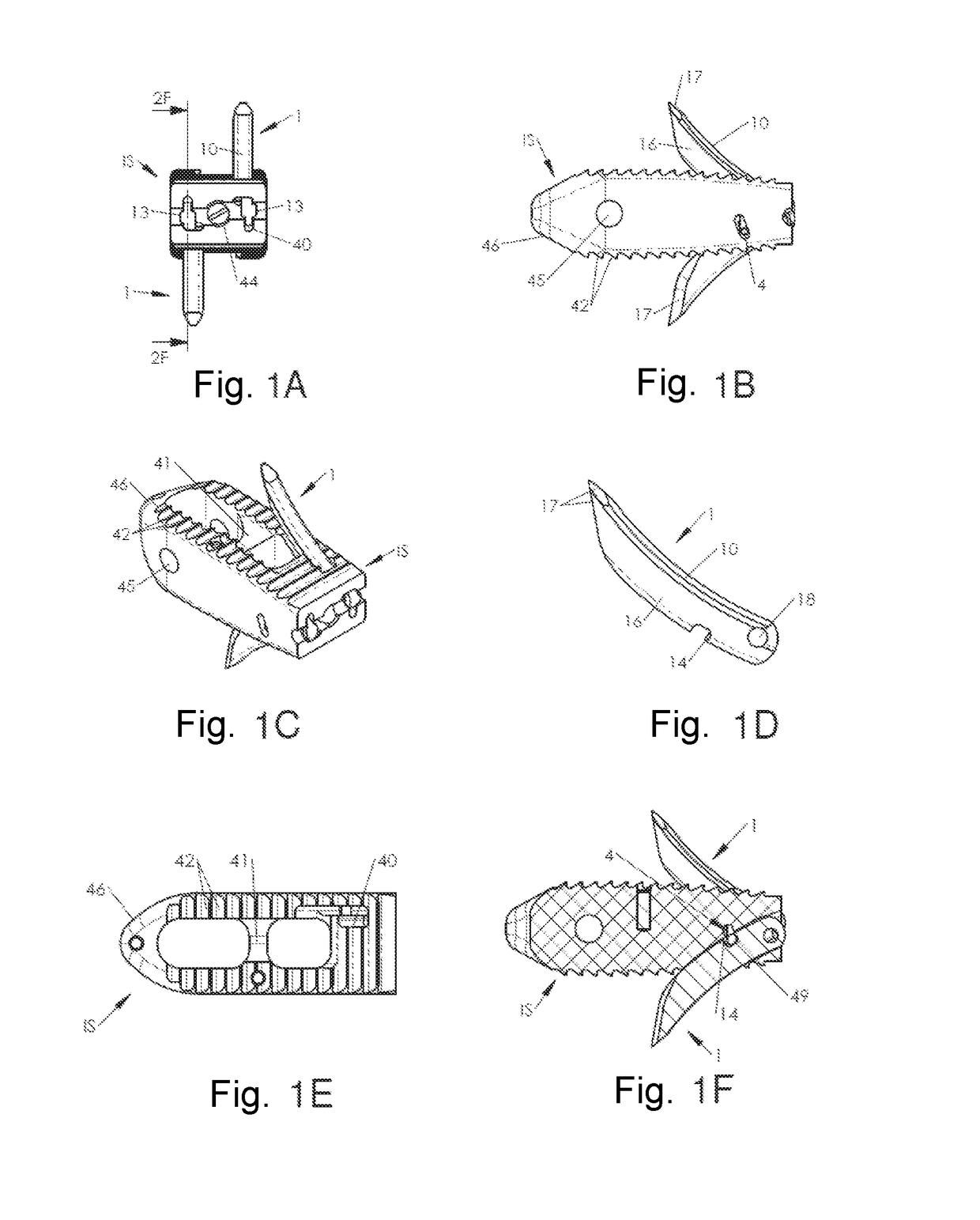System of spinal arthodesis implants
a spinal arthodesis and implant system technology, applied in the field of spinal implants, can solve the problems of increasing the size and invasivity of the space between the disc space and the intervertebral space, adding an additional constraint on the size and the invasibility, and most prior art solutions do not give the possibility of benefiting from the literature teachings,
- Summary
- Abstract
- Description
- Claims
- Application Information
AI Technical Summary
Benefits of technology
Problems solved by technology
Method used
Image
Examples
Embodiment Construction
[0079]The present invention relates to a system for arthrodesis (bone fusion) of at least two adjacent vertebrae. Such a system includes at least two implants of at least two different types. The present invention thus for example relates to a spinal arthrodesis system including at least two types of implants from among the three following types:[0080]An intersomatic implant (IS),[0081]An interspinous implant (IE),[0082]A facet implant (IF).
[0083]More particularly, a system will generally be selected, the implants of which have technical features giving the possibility of meeting at least one portion of the problems mentioned in the present application.
[0084]Thus, diverse embodiments relate to a spinal arthrodesis system comprising several implants of several types, for the arthrodesis of at least two adjacent vertebrae (VI, VS), characterized in that it includes on the one hand:[0085]at least one intersomatic implant (IS), intended to be implanted in the discal space between said a...
PUM
 Login to View More
Login to View More Abstract
Description
Claims
Application Information
 Login to View More
Login to View More - R&D
- Intellectual Property
- Life Sciences
- Materials
- Tech Scout
- Unparalleled Data Quality
- Higher Quality Content
- 60% Fewer Hallucinations
Browse by: Latest US Patents, China's latest patents, Technical Efficacy Thesaurus, Application Domain, Technology Topic, Popular Technical Reports.
© 2025 PatSnap. All rights reserved.Legal|Privacy policy|Modern Slavery Act Transparency Statement|Sitemap|About US| Contact US: help@patsnap.com



